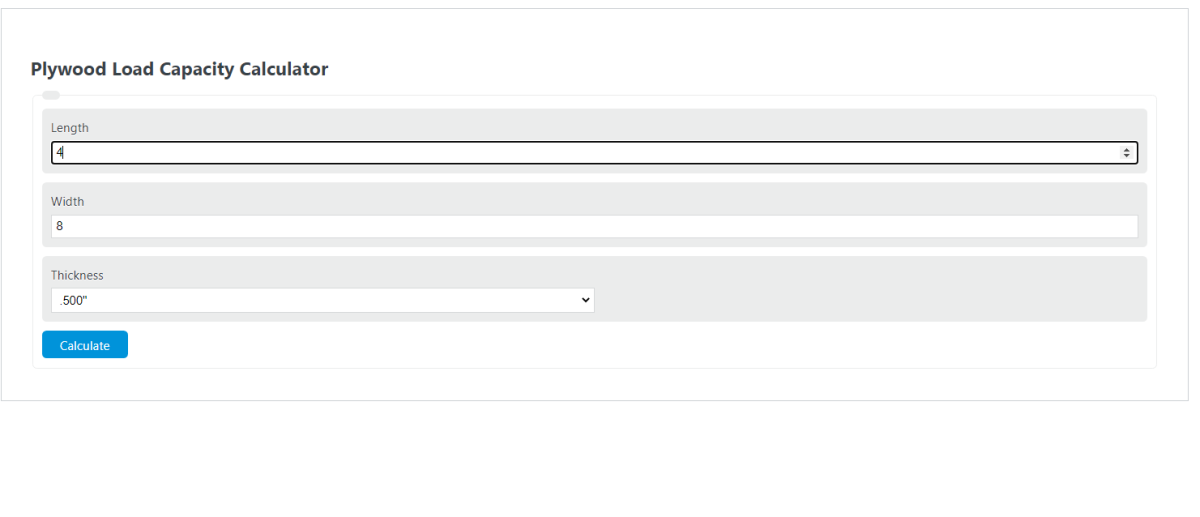Enter the thickness of the plywood, the length, and the width into the calculator to determine the total load capacity.
- Cords of Wood Calculator
- Door Header Size Calculator
- Shiplap Calculator
- Board Foot Calculator
- Plywood Weight Calculator
- Wood Density Calculator
Plywood Load Capacity Formula
The following formula is used to calculate a total load capacity of a piece of plywood:
LC = L* W * MP
- Where LC is the load capacity (lbs)
- L is the length of the plywood (ft)
- W is the width of the plywood (ft)
- MP is the max pressure based on thickness (psf)
To calculate plywood load capacity, multiply the length and width of the plywood, then multiply by the max pressure of the board.
The max pressure of the plywood can be estimate using this table:
| Thickness | Max Pressure (PSF) |
| .125″ | 8 |
| .250″ | 16 |
| .375″ | 22 |
| .500″ | 35 |
| .750″ | 79 |
| 1″ | 160 |
What is plywood load capacity?
A plywood load capacity is the maximum weight a piece of plywood can hold without breaking.
The load capacity assumes that the weight is distributed evenly accros the piece of wood, which is often not the case, so the load capacity should not be taken as “if i put x amout of weight right in the center it will hold”. This will lead to failure.
How to calculate plywood load capacity?
The following example problem outlines how to calculate a load capacity of a piece of plywood.
First, determine the overal length of the piece of plywood. For this example, the length is 8 ft.
Next, determine the overal width of plywood. In this case, the width is 4 ft.
Next, determine the thickness of the plywood. The thickness is measured to be .500″
Finally, calculate the load capacity using the formula above:
LC = L* W * MP
LC = 4*8 * 35
LC = 1120 lbs (even force)
